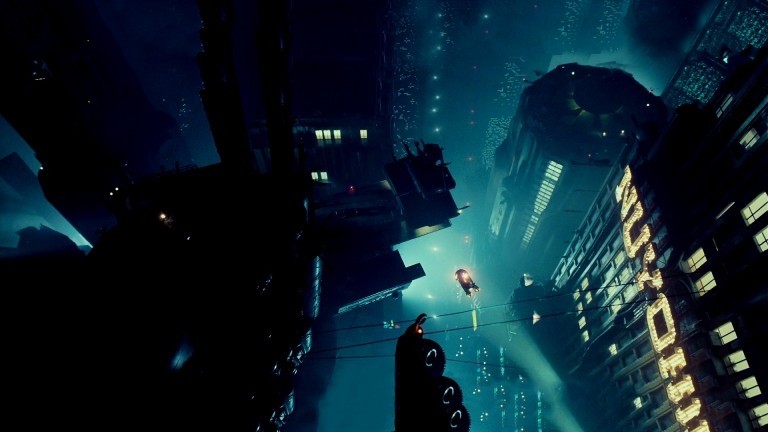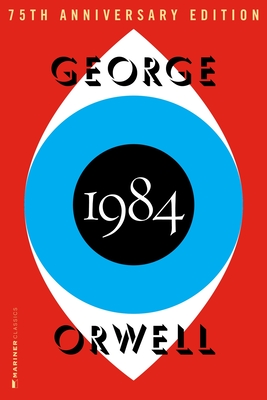The Five Types of Dystopian Narrative
| by J.M. Berger

Why do some dystopian narratives mobilize people to commit political or terrorist acts, while others do not?
Dystopian narratives are descriptions of a fictional or real society as corrupted thoroughly and beyond redemption due to one or more specific problems. Due to its totalizing nature, the dystopian fiction genre has traditionally appealed to extremist ideologists. But the radical dystopian corpus is staggeringly large, and only a handful of works can be said to have influenced political outcomes, extremist or otherwise.
While some factors are difficult to quantify, including an author’s writing talent and the effect of an especially timely theme, certain narrative patterns can be seen in the genre as a whole. The type of struggle depicted in any given text helps shape the nature of reader engagement and subsequent mobilization.
Dystopian struggle narratives can be sorted into five categories:
1. Pre-emptive victory: Preventable dystopias
Dystopian narratives are often presented as cautionary tales, meaning that they emphasize the fact that the future they describe is preventable. This sentiment is often plainly stated in the text, as seen in A Journey in the City of Amalgamation, the first American dystopian novel, published in 1835 and describing a time traveler who witnesses a potential future of forced miscegenation.
This approach can be effective for stories that mobilize extremists, including The John Franklin Letters (1959) and The Turner Diaries (1978), first-person narratives in which a protagonist describes a regime that is clearly attributed to the failures of the past, implicating the reader’s complicity in those failures. Both stories feature narrators or characters who explicitly consider how the reader’s complacency led to the dystopian outcome.
Most dystopias include some degree of cautionary message, whether explicit or implicit, meaning that preventable dystopias tend to overlap with the other four categories described here. Simply by their futuristic nature, most dystopias are technically preventable, but some dystopian authors go out of their way to emphasize this point. For instance, Floyd Gibbons, author of the anti-miscegenation dystopia The Red Napoleon (1929), opens the book with an inscription: “DEDICATED TO THE HOPE THAT IT WILL NOT HAPPEN.”
2. Conventional victory: Systems that can be resisted and overcome
This category most often overlaps with the first, as in The Turner Diaries, which not only condemns readers’ passivity but offers concrete steps the reader can take to fight back against “the System.” In addition to Turner and Franklin, narratives about dystopias that can be resisted and overcome include The Spook that Sat by the Door (1969) and the Patriot movement’s Enemies Foreign and Domestic (2003, 2006, 2009) trilogy. These stories mobilize readers by showing that successful resistance is possible even in extreme circumstances, becoming especially effective when the text includes guidance on how to resist.
Mainstream dystopian narratives that depict successful resistance, such as The Hunger Games (2008), sometimes gain traction among both extremist and non-extremist activists who may find them useful as metaphor, slogan, or aesthetic. Another example, the graphic novel V for Vendetta (1982), popularized the use of the Guy Fawkes mask as a visual inspiration for activists such as (but not limited to) the Anonymous and Occupy movements.

3. Conditional defeat: Systems that can be resisted but not overcome
The doomed struggle to maintain one’s values in the face of overwhelming oppression can make for very compelling art, but it doesn’t necessarily spur people to action. Some classics of the dystopian genre describe regimes that can be resisted but cannot be overcome, such as Escape from New York (1981), Rollerball (1975) and The Prisoner (1968), in which protagonists are able to carry out meaningful acts of personal resistance but are unable to defeat the system itself—or at least they are not clearly seen to do so. These stories may inspire individuals to stay true to their values in the face of certain defeat, but they may convey the idea that resistance is doomed or pointless.
These narratives are often characterized by ambiguous endings, and the meaning of “resistance” may also be ambiguous. For example, the 1985 novel The Handmaid’s Tale does not offer a clear resolution for its protagonist’s deeply personal acts of resistance against the misogynist theocracy in which she lives. In contrast, the TV adaptation of The Handmaid’s Tale (2017) is much less ambiguous and much more revolutionary, depicting meaningful resistance and perhaps even teasing a conventional victory. (The final season has not yet debuted.)
While there are no examples of terrorism inspired by The Handmaid’s Tale, the story’s aesthetic has proven very effective for political protestors seeking to emphasize violence against and oppression of women, especially in the context of bodily autonomy and reproductive rights. Protestors have at times dressed in the characteristic garb of the novel’s oppressed “handmaids,” and the dystopian regime’s name of Gilead has become shorthand for theocratic aspirations.

4. Pyrrhic victory: Systems that cannot be overcome but can be catastrophically destroyed
Some dystopian stories adopt an accelerationist narrative, depicting a world where the dystopian system cannot be rescued but can be destroyed, presumably to allow a fresh start. One memorable example from popular culture is Escape From L.A. (1996), the nihilistic sequel to Escape from New York. Caesar’s Column, an anti-Semitic novel published in 1890, ends with a literally pyrrhic victory—a mountainous mass grave of smoking corpses. The book was extremely popular in its day, but one would be hard pressed to cite any real social or political impact.
Pyrrhic themes are often seen in religious dystopian stories. The Lord of the World (1907) depicts the Catholic Church facing an existential challenge from widespread atheistic and socialistic corruption that can only be redeemed by the end of everything. The book has been and continues to be influential on the thinking of Catholic elites, including the last two popes, but it would be hard to quantify any mass mobilization related to its content.
More concretely impactful, the 1944 apocalyptic dystopia When? A Prophetical Novel of the Very Near Future depicts a world corrupted by Jewish people, which can only be saved by the onset of literal Armageddon. When? is best-known as the earliest expression of Christian Identity, a White supremacist ideology. By virtue of its introduction of toxic ideological elements to a targeted audience, When? almost certainly played a major role in shaping the Christian Identity movement, which later became violent. The book itself has not, however, been directly implicated in a specific act of extremist violence.
The last two works are best understood as ideological influences, rather than as calls to action. In both cases, the end of the world is divinely ordained and inescapable, similar to views expressed by some nonfiction accelerationist writers such as Julius Evola, who describes a cosmic cycle that will inevitably conclude in destruction and rebirth, regardless of what his readers choose to do with their lives. Mobilization may be desirable for various reasons, but it’s less imperative when events are fated to take a certain course
5. Comprehensive defeat: Systems that cannot be resisted or destroyed
The final category of dystopian narrative describes systems that cannot be destroyed and cannot even be resisted. By far the best-known and most-consequential example of this narrative group is George Orwell’s 1984, which was published in 1949 and depicts a totalizing and all-powerful dystopian regime that crushes any imaginable act of resistance, even when that resistance is purely symbolic, silent, and/or internal. In 1984, the system eradicates hope, leaving little inspiration for a mobilized response. The book’s social impact stems from its incisive description of fascist power dynamics rather than from any prescription toward action. Movies like Soylent Green (1973) and Brazil (1985) present conclusions that are nearly as bleak, capturing the public’s imagination but not obviously influencing the course of society.
While a narrative about the futility of resistance may not obviously encourage mobilization, extremists frequently employ total defeat narratives in order to catastrophize and stoke fear about immigration. Starting in the late 1870s, a series of lurid novels depicted American society collapsing under a wave of Chinese immigration, characterized as a figurative or literal invasion of the United States, with subsequent iterations focused on England and Australia.
Although the enemies have shifted over time, the genre of racist novels about immigrants conquering the White Western world has proven remarkably durable. One of the most influential, The Camp of the Saints, a 1974 French novel, offers a racist vision of comprehensive defeat for White Europeans at the hands of an onslaught of non-White migrants. More recent entries include Submission, a 2015 French novel about a Muslim takeover of France. For the most part, these books resonate strongly with mainstream anti-immigrant political forces.

The utility of narratives
Each type of dystopian narrative establishes a different relationship with the reader.
The “pre-emptive victory” theme is one of the most prevalent in the genre, although it often remains tacit in the text. Generally speaking, the entire point of the dystopian genre is to warn readers about how current trends may lead to horrific outcomes. Many authors are content to simply issue the warning, but those who also provide a template for action—such as William Luther Pierce in The Turner Diaries or Sam Greenlee in The Spook Who Sat by the Door—are more likely to mobilize readers.
Conventional victory stories are similarly received by readers, although their language and aesthetics may be more suited to inspiring rallying cries than blueprints for revolution.
While pre-emptive and conventional victory narratives hold obvious charms for politically minded readers, they are not the end of the story. Pyrrhic victory scenarios are particularly suited to ideological reification, marrying apocalyptic religious conceits to more political dystopian commentary, as seen in The Lord of the World and When?.
These narratives are more ideological than simple apocalyptic content (eschatology, prophecy, or scripture) because they link the coming apocalypse to a particular strain of dystopian system—socialist and humanist in the former, Jewish and non-White in the latter. Some form of apocalypse is an article of religious faith for many people, extremist and non-extremist, existing in a form completely independent of an extremist ideological argument. Linking the two can imbue an extremist ideology with an aura of religious legitimacy, creating a magnetic future crisis that can be easily incorporated into an extremist system of meaning.
Conditional defeat narratives may be cited by extremists, but they are not especially impactful in that space. Several factors may contribute to this. Conditional defeat may be seen as noble, but it can also be understood to render the protagonist’s struggle pointless. In addition, conditional defeat stories often end on deeply ambiguous notes, as in The Prisoner and The Handmaid’s Tale, where viewers and readers are left to question the nature of the outcome.
Extremist ideologists seek to resolve uncertainty. Conditional defeat narratives tend to provoke uncertainty, leaving readers unsure about whether and how to resist. Some accelerationist ideologues, such as Julius Evola, argue that acts of futile resistance serve a higher purpose for individual moral development, but this is a pretty tough row to hoe.
In light of that, one might think that comprehensive defeat narratives would also prove problematic for extremist mobilization, but the evidence suggests otherwise. Conditional defeat raises a series of questions for an audience, but an aggressive narrative of comprehensive defeat is more likely to convey certainty about imminent peril. Comprehensive defeat narratives do not offer a prescription for action in the same way that Turner does, because all the actions taken by protagonists in the story ultimately fail. Instead, by stoking high levels of fear, they make a non-specific case for extreme, urgent and systemic action. Comprehensive defeat can only be prevented by comprehensive action by the whole of society.
Thus, these scenarios are most often deployed in the service of lawful extremism. Anti-Chinese dystopias played an important role informing debate around the passage and revision of the Chinese Exclusion Act in the late 19th and early 20th centuries. More recent examples include the citation of The Camp of the Saints by ideologists behind the Trump administration’s anti-immigration efforts, including its attempt to ban Muslims from entering the United States.
Understanding the classes of dystopian narrative can inform efforts to counter extremism by clarifying the kind of argument posed by any given text and the type of mobilization it might encourage. Too often, extremist texts are treated as enigmatic objects of power that work mysteriously on the minds of readers, or on the other end of the spectrum, dismissed as being relatively unimportant. The truth lies somewhere between.
Finally, it’s important to note that dystopian narratives are not confined to fiction. Extremist ideologists, and their allies and advocates, including mainstream politicians, may employ dystopian narratives in rhetoric that is meant to be understood as non-fiction (regardless of its actual veracity). These efforts employ the same narrative types found in fiction, with a heavier emphasis on prospects for pre-emptive or conventional victory, since such rhetoric typically presents a desired political outcome as the solution to the problem.
Dystopia is not simply a literary genre; it’s a prism for viewing the world and how to live in it.
J.M. Berger is a writer and researcher focused on extremism as a Senior Research Fellow for the Center on Terrorism, Extremism, and Counterterrorism (CTEC) at the Middlebury Institute of International Studies (MIIS). Views expressed herein are those of the author and do not necessarily reflect the opinions and beliefs of CTEC or MIIS. A commission is paid on sales made through some links to books and movies in this article.
